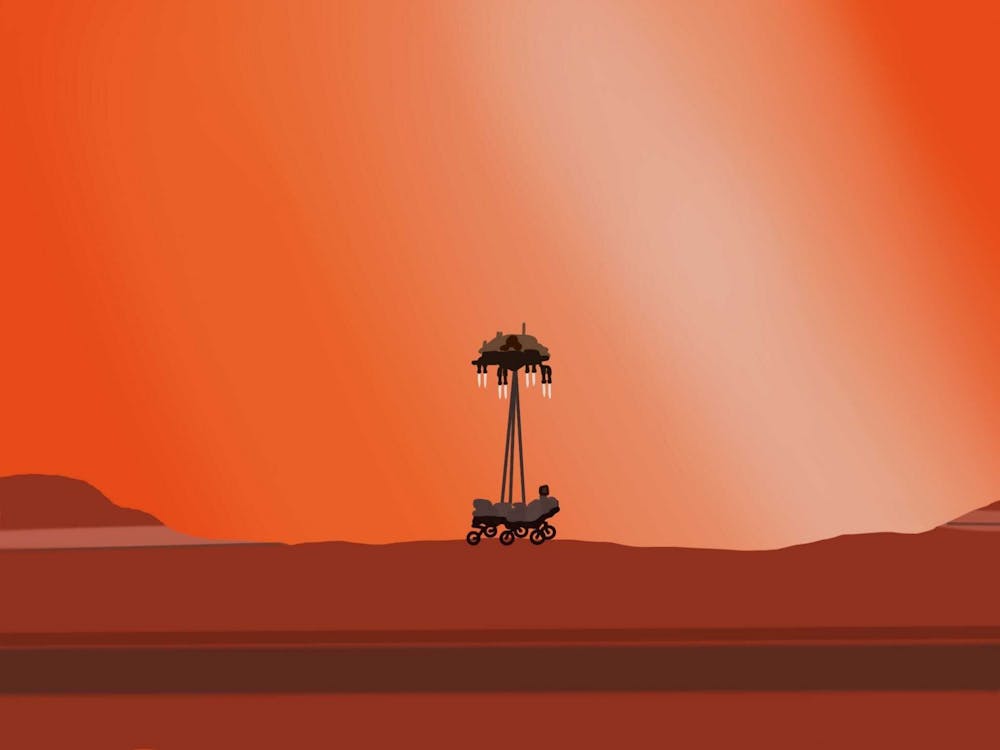A little over six months after it was launched from Earth, the Perseverance rover landed in the Jezero Crater on Mars in February and began its mission to find evidence of ancient life.
The Jezero Carter was selected from about 60 other potential landing sites on Mars. The selection was a result of a five-year collaborative effort by scientists from institutions around the globe, including the Applied Physics Laboratory (APL). The selection of Jezero heavily relied on data collected from imaging instruments that are currently in orbit.
In 2005 the Compact Reconnaissance Imaging Spectrometer for Mars (CRISM) started imaging the Martian surface along with other instruments on the National Aeronautics and Space Administration’s (NASA) Mars Reconnaissance Orbiter. The APL created CRISM and analyzed images that were helpful in selection of Jezero.
In an email to The News-Letter, Kevin Lewis, an assistant professor who focuses on the geological history of Mars, explained what intrigued scientists from Jezero’s images.
“Not only does [Jezero] have a river delta that is elevated above the crater floor, it also has an outlet river valley on the other side of the crater which is also elevated above the crater floor,” he wrote. “This suggests that water had to have filled the crater up to at least that level in an ancient lake.”
CRISM has also detected several hydrated minerals around the river delta.
“CRISM data from orbit at the Jezero site have revealed both carbonate and clay minerals, which are typical environments where water has been able to alter the rock,” Lewis wrote.
In addition to helping select the Perseverance rover landing site, APL scientists continue to be involved in the mission by operating the Perseverance rover, directing future rover commands and interpreting data from mission instruments.
Jeffrey Johnson, a principal professional scientist at APL, is a co-investigator on the Mastcam-Z and SuperCam instruments, which collect data that help determine the composition of the rocks that the rover comes across. Johnson works with Jorge Núñez, a senior planetary scientist at APL, to analyze the images and spectral reflectance acquired by the Mastcam-Z instrument.
“Analyzing these data helps us understand the geologic history of the terrains encountered by Perseverance,” Johnson wrote in an email to The News-Letter. “This is necessary to help decide which types of rocks to sample and store onboard, and to provide context for the areas in which those samples were collected.”
In the past, technological deficiencies hindered the possibility of bringing back samples from Mars. Recently, NASA has partnered with the European Space Agency to create a Mars Sample Return (MSR) campaign to make this possible.
Perseverance is the first of the three spacecraft missions that comprise the MSR campaign, Johnson explained. In the coming years, a small rover will be sent to Mars to collect the geological samples that Perseverance prepares. For the second mission, the rover will be launched into the atmosphere of Mars and orbit around the planet. Then, in the early 2030s, a third spacecraft will fetch the orbiting satellite and take it to Earth to be analyzed.
On the Jezero Crater, scientists hope that the Perseverance rover will confirm evidence of water and help determine whether ancient Mars was once habitable.
“I hope the samples we collect will enable future scientists (some of whom have not been born yet) to study in great detail the over four billion year history of Mars, and most importantly whether they will find evidence of ancient microbial life left behind in those samples,” Johnson wrote.
The duration of water on Mars is also of interest to the scientists. Lewis hopes that the mission will reveal that water had been present on Mars long enough to support life.
Johnson and Núñez have also begun planning for future missions, including human missions to Mars.
“In addition to helping us understand early Mars and whether it was capable of supporting ancient life, Perseverance will also help us prepare for sending humans to Mars by demonstrating two technologies that are critical for sending humans to the Martian surface,” Núñez wrote.
One of the technologies, Terrain-Relative Navigation, allowed Perseverance to land safely and precisely on the Martian surface. The second technology, the Mars Oxygen In-Situ Resource Utilization Experiment, converts the carbon-dioxide-rich Martian air to oxygen, which would be essential for future astronaut missions.
Applying what they have learned from the Perseverance mission, Johnson and Núñez will work as co-investigators on a future APL mission: a trip to Titan, the largest moon of Saturn.
“Together, we are taking our current experiences with Perseverance operations (combined with my previous Mars rover mission experiences dating back to Mars Pathfinder), and directly applying those to discussions regarding operation of the Dragonfly mission to Titan, an APL-led mission on which we are both Co-Investigators,” Johnson wrote.





